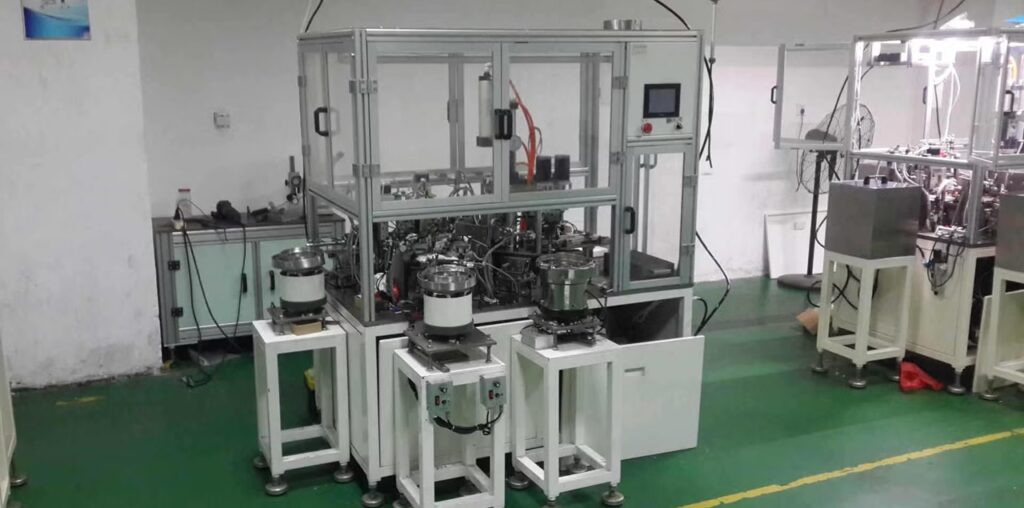Riveting is a crucial process in manufacturing, ensuring strong and reliable joints in metal, plastic, and composite materials. But traditional riveting methods can be time-consuming, inconsistent, and labor-intensive. If you’re looking to improve productivity and maintain quality, it’s time to explore automation.
An automated riveting machine can revolutionize your production line by increasing efficiency, reducing errors, and cutting labor costs. But how does it work, and why is it essential for your business? Let’s dive into the details.
If you’re still relying on manual riveting, you may be falling behind competitors who have embraced automation. An automated riveting machine enhances efficiency, precision, and safety while reducing costs.
What Is an Automated Riveting Machine?
An automated riveting machine is a high-tech system designed to insert and secure rivets with minimal human intervention. Unlike manual or semi-automated methods, this machine streamlines the process, ensuring precision and speed.
These machines come in various types, including impact, orbital, and radial riveting machines, each suited for different applications. Whether you’re in automotive manufacturing, aerospace, electronics, or general assembly, automation can significantly enhance your production capabilities.
How an Automated Riveting Machine Works
Automated riveting machines operate using programmed controls that dictate the force, speed, and placement of each rivet. The process typically involves:
- Material Positioning – The components are fed into the machine using automated systems.
- Rivet Placement – The machine positions and inserts the rivet accurately.
- Compression & Securing – The rivet is compressed with the appropriate force to ensure a secure joint.
- Quality Control – Many advanced machines include real-time monitoring to detect defects instantly.
With these automated steps, manufacturers can produce consistent, high-quality products without human error.
Benefits of an Automated Riveting Machine
Now, let’s explore why investing in an automated riveting machine is a smart move for your business.
1. Boosts Productivity and Efficiency
Manual riveting is slow and repetitive. With automation, production speeds increase dramatically. Machines can operate 24/7 with minimal supervision, handling thousands of rivets per hour. This means you can meet high demand without compromising quality.
2. Enhances Rivet Precision and Consistency
Human errors in manual riveting can lead to weak joints, misaligned rivets, or even product failures. Automated riveting machines eliminate these issues by applying consistent pressure and placement every time, ensuring uniform results.
3. Reduces Labor Costs and Workplace Injuries
Skilled labor is expensive, and repetitive tasks like riveting can lead to worker fatigue and injuries. Automating the process reduces the need for manual labor while creating a safer working environment. Your employees can focus on more complex tasks, adding more value to your operations.
4. Improves Quality Control
With built-in monitoring systems, automated riveting machines can detect and correct issues in real time. This ensures that every rivet meets strict quality standards, reducing the risk of defects and recalls.
5. Offers Scalability for Growing Businesses
If your business is expanding, an automated riveting machine allows you to scale up production effortlessly. You won’t need to hire and train additional workers—your machine can handle increased workloads without missing a beat.
6. Reduces Material Waste
Mistakes in manual riveting often lead to wasted materials. Automation minimizes these errors, cutting down on wasted components and lowering overall production costs.
7. Compatible with Various Materials and Applications
Automated riveting machines work with a wide range of materials, including aluminum, steel, plastic, and composites. Whether you’re manufacturing aircraft components, electronics, or furniture, there’s a solution to fit your needs.
Types of Automated Riveting Machines
Choosing the right machine depends on your application. Here are some common types:
1. Impact Riveting Machines
These machines use high-speed force to set rivets instantly. Best for applications requiring strong, permanent joints.
2. Orbital Riveting Machines
Utilize a controlled, circular motion to deform rivets smoothly. Ideal for delicate materials and components needing a clean finish.
3. Radial Riveting Machines
Provide precise and gentle deformation, ensuring maximum joint strength with minimal stress on the material. Common in automotive and aerospace industries.
4. Servo-Driven Riveting Machines
Offer programmable control over speed and force, making them highly adaptable to various applications.
Industries That Benefit from Automated Riveting Machines
1. Automotive Industry
From assembling car bodies to securing interior components, automated riveting is widely used in vehicle manufacturing.
2. Aerospace Industry
Aircraft structures require precision and strength. Automated riveting ensures compliance with strict safety standards.
3. Electronics Manufacturing
Tiny, delicate components in consumer electronics demand precise assembly, making automation essential.
4. Furniture and Appliances
Riveting plays a key role in producing durable, high-quality home and office products.
How to Choose the Right Automated Riveting Machine
When selecting an automated riveting machine, consider these factors:
- Material Compatibility – Ensure the machine can handle the materials you work with.
- Production Volume – Choose a machine that meets your output requirements.
- Budget and ROI – While automation is an investment, the long-term savings in labor and materials make it worthwhile.
- Customization Options – Some machines allow for modifications to suit specific needs.

